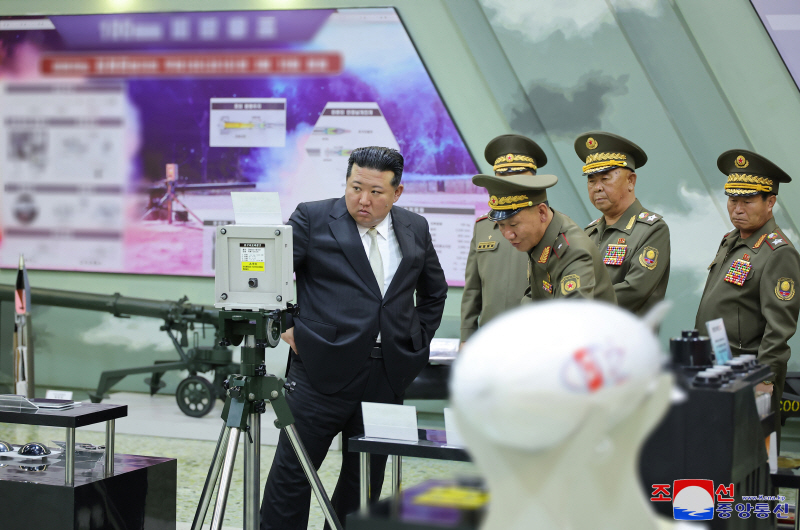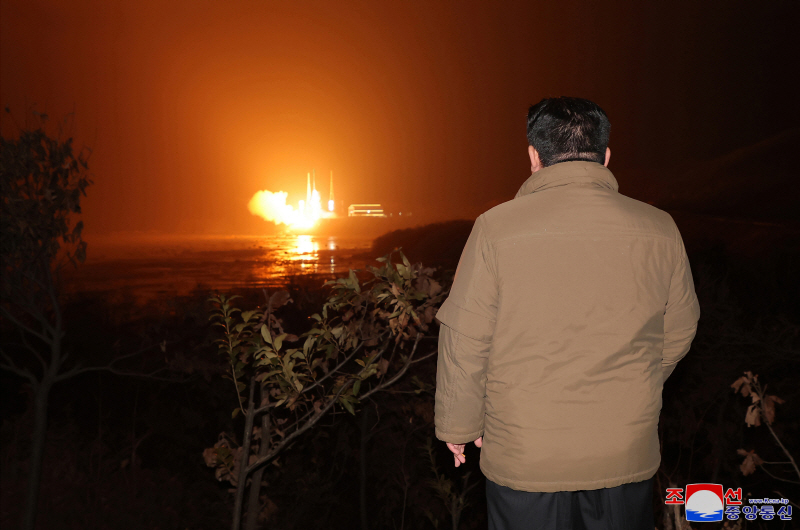North Korea’s military reconnaissance satellite, which exploded mid-air on May 27, has led the South Korean National Intelligence Service (NIS) to weigh heavily on the possibility that Russia provided North Korea with a new engine in a completed form.
While suspicions of Russian support for North Korea’s satellite technology have been consistently raised, this is the first time the NIS has suggested the possibility of a complete engine transfer.
In a meeting with the National Assembly’s Intelligence Committee on July 29, the NIS reported that the new engine used in North Korea’s reconnaissance satellite likely originated from Russia, given that it used “liquid oxygen and kerosene (jet fuel) for the first time,” which increases thrust and reduces toxic emissions. The committee’s ruling and opposition party ranking members disclosed this information, with the NIS noting there were no prior signs of North Korea developing such an engine.

On July 1, a government source familiar with the field explained to the JoongAng Ilbo, a leading Korean newspaper affiliated with the Korea Daily, that the NIS’s report indicates not just a transfer of technology but that North Korea might have received the entire engine from Russia, given there were no prior signs of development and the engine used liquid oxygen and kerosene fuel for the first time.
In November last year, North Korea successfully launched a reconnaissance satellite using a combination of hydrazine (UDMH) fuel and nitrogen tetroxide (N2O4) oxidizer. Just six months later, North Korea attempted a test launch with a new engine, leading to persistent suspicions of Russian assistance. The specific circumstances suggesting that a complete engine was provided have now been confirmed.
Experts have similarly assessed that North Korea’s military reconnaissance satellite technology advanced rapidly to a near-operational stage within just one year, thanks to cooperation with Russia. Survey by JoongAng Ilbo of six military experts on August 1 supports this view.
The continued cooperation between North Korea and Russia indicates that rapid advancements in satellite technology are possible in the future. While some believe North Korea may be overstating its achievements, the collaboration with Russia and focused development make it hard to dismiss North Korea’s pace of satellite development.
Six military experts rated North Korea’s military tasks, which were presented by Kim Jong-un at the 8th Workers’ Party Congress in January 2021. These tasks include tactical nuclear weapons, solid-fuel intercontinental ballistic missiles (ICBM), submarine-launched ballistic missiles (SLBM), super-large nuclear warheads, drones, underwater-launched nuclear strategic weapons, hypersonic missiles, military reconnaissance satellites, and nuclear submarines.
Last August, JoongAng Ilbo also conducted an in-depth survey with experts to evaluate the progress of these nine tasks using a 1-10 point scale, where 1-3 indicates conceptualization and technology development, 4-7 indicates technology demonstration and refinement, and 8-9 indicates technology maturity and mass production, with 10 representing the highest level of completion comparable to advanced countries.
Comparing last year’s and this year’s results, the average score for the nine tasks increased from 5.5 to 6.3 points, indicating significant overall advancement.

The most notable increase was in the military reconnaissance satellite category, which jumped from 4 to 5.8 points. This reflects the successful orbit insertion of the Malligyong-1 satellite using the Chollima-1 launch vehicle in November last year, despite failures in May and August of the same year.
However, experts pointed out that it’s a separate issue whether the North Korean reconnaissance satellite is sending meaningful information.
Jang Young-geun, head of the Missile Center at the Korea Research Institute for National Strategy, speculated that Malligyong’s optical camera might be a small twin-telescope type, with an estimated resolution of 1.5 to 4 meters.
Military authorities generally consider that military reconnaissance satellites should have a sub-meter resolution, meaning they can distinguish objects smaller than 1 meter in size. North Korea’s satellite, equipped with Japanese commercial cameras, does not meet this standard.
Jung Hong-yong, former President of the Agency for Defense Development (ADD), emphasized that besides launch capability, North Korea must also develop communication and control technology to effectively operate military reconnaissance satellites. He cautioned that expecting North Korea to develop all related technologies in the near future might be overly optimistic.
Nevertheless, experts believe North Korea could achieve rapid progress in payload technology, in addition to launch vehicles, with Russia’s support.
Jang Young-geun predicted that if North Korea manages to circumvent international sanctions and acquire high-performance electronic components, developing and acquiring high-performance electro-optical satellites with near 1-meter resolution should not be difficult.
BY KEUNPYUNG LEE, YOUNGNAM KIM [lee.keunpyung@joongang.co.kr]




